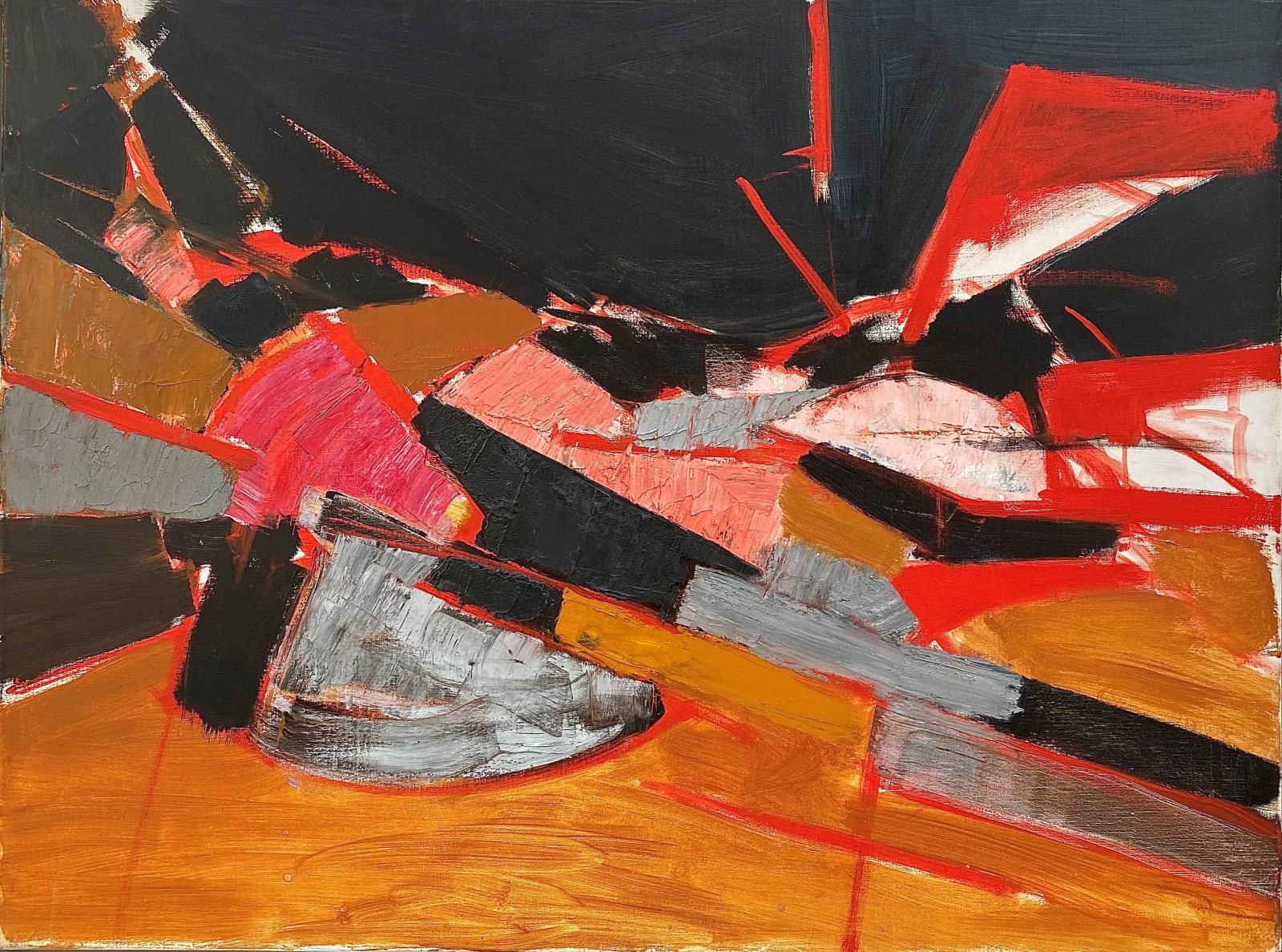Adrian Heath
Composition; Black, Red and Grey was first exhibited at Heath’s first solo show at the Hanover Gallery – part of a trilogy of exhibitions which formed something of a sabbatical from his representation by the Redfern Gallery. In the catalogue essay accompanying the exhibition, the critic Andrew Forge noted that the new work had “a different rhythm” and “a certain ferocity of movement… a sense of violence, of swift impact.” Jane Rye notes how the paintings, of which our work is a prime example, contain “slab-like forms packed down like geological rock strata (and) convey a sense of pressure rather than stability; the paint is applied thickly and freely with palette knife and brush.”
Heath, not unlike many of his contemporaries, was arguably more in tune with the European avant-garde of the 1950s as opposed to the American Abstract Expressionist painters. Heath admired Nicholas de Stael and Serge Poliakoff in particular, perhaps a response to seeing their work at the Hanover Gallery during this period. Heath, and contemporary critics, were careful not to draw too many comparisons between the artists but it is undeniable that there is a least a superficial similarity between the three artist’s work.
Born in 1920, Adrian Heath educated at Bryanston School. In 1938, he studied art under Stanhope Forbes at Newlyn. In 1939 and 1945–47, he attended the Slade School of Art. He served in the RAF as a tail gunner in Lancaster bombers in World War II, but spent almost the entire war as a prisoner of war at Stalag 383. During the Second World War, Heath met Terry Frost in a Bavarian prisoner-of-war camp and it was there that Heath inspired Frost to paint. After the war, Heath spent six months with Frost in St. Ives. Heath was to become the main link between the St. Ives School and the London based ‘ Constructionists’ (Mary and Kenneth Martin, Victor Pasmore and Anthony Hill). His work is represented in many public collections, not least the Tate Gallery, London; Victoria and Albert Museum, London; Whitworth Gallery, Manchester; and the Hirschhorn Museum, Washington.
Provenance
Osbourne Samuel Gallery, London.
Private Collection, UK.
Alan Wheatley Fine Art, London.
Private Collection, London.
Exhibitions
London, A.I.A (Artists International
Association) Exhibition, n.d., catalogue not traced.
London, Hanover Gallery, Adrian Heath: Recent
Paintings, January – February 1959.
